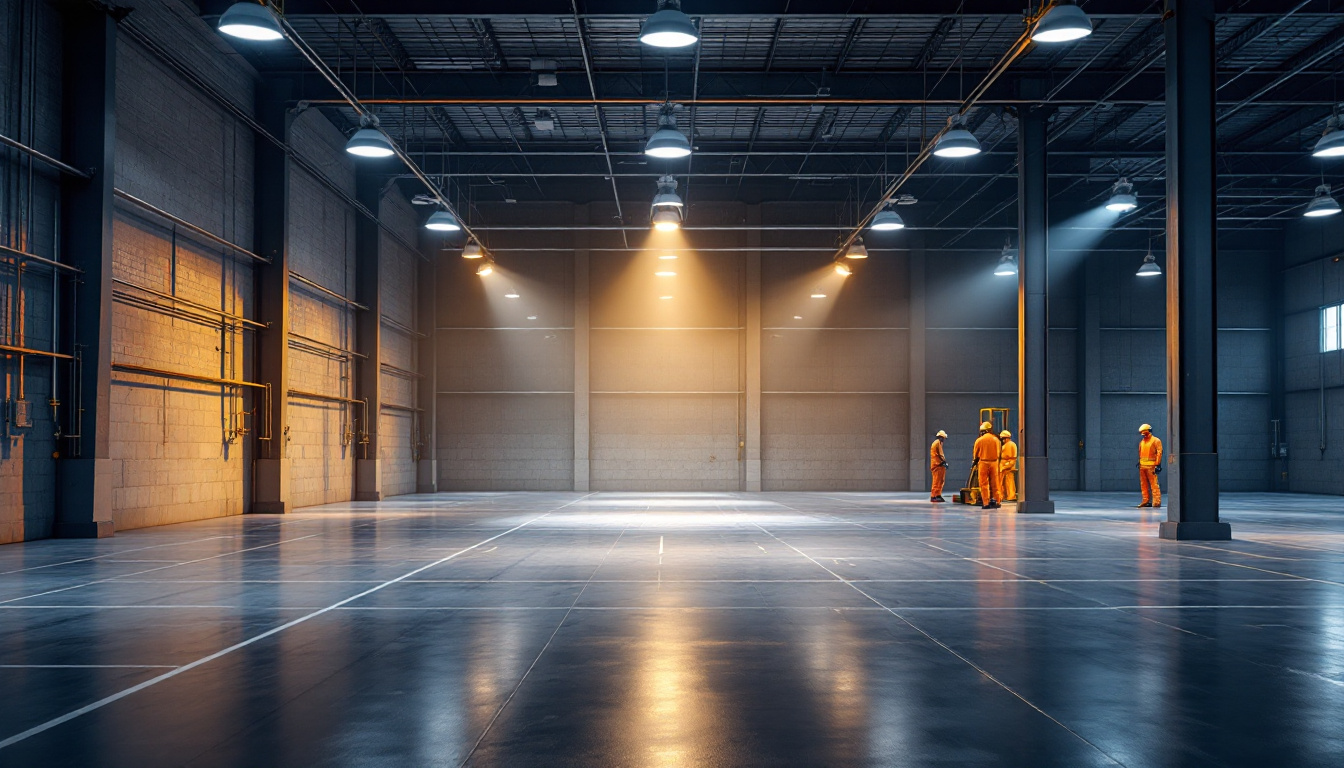
In the realm of warehouse operations, effective lighting is not merely an afterthought; it is a critical component that can significantly impact productivity, safety, and energy efficiency. As a lighting contractor, understanding the nuances of warehouse lighting can set you apart in a competitive market. This article delves into essential considerations, best practices, and innovative solutions that lighting contractors should keep in mind when designing and implementing warehouse lighting systems.
Before embarking on a lighting project, it is vital to assess the specific needs of the warehouse. Each facility has unique operational requirements that dictate the type and intensity of lighting necessary. Factors such as the layout of the space, the types of goods stored, and the workflow patterns can all influence lighting choices. Additionally, considering the energy efficiency of lighting options can lead to significant cost savings and a reduced environmental footprint over time.
Different types of warehouses—such as distribution centers, cold storage facilities, and manufacturing plants—have varying lighting requirements. For instance, a distribution center may prioritize high visibility for sorting and picking operations, while a cold storage facility must consider the impact of lighting on temperature control. Understanding these distinctions helps in tailoring a lighting solution that meets the specific demands of the space. Furthermore, specialized warehouses, like those handling hazardous materials, may require explosion-proof lighting fixtures to ensure safety while maintaining adequate visibility.
In warehouses, certain tasks may require different levels of illumination. Areas designated for picking, packing, or assembly may benefit from brighter, focused lighting, while storage areas may require less intense illumination. Conducting a thorough task analysis can help in determining the optimal lighting design that enhances efficiency and reduces errors. Moreover, incorporating adjustable lighting systems can provide flexibility, allowing for changes in brightness depending on the time of day or specific tasks being performed. This adaptability not only supports various operational needs but also contributes to employee comfort and productivity, ultimately leading to a more effective warehouse environment.
Additionally, the integration of smart lighting technologies can further enhance warehouse operations. These systems can be programmed to adjust automatically based on occupancy or natural light levels, ensuring that energy is used efficiently while maintaining optimal visibility. By leveraging sensors and controls, warehouses can minimize energy waste and reduce operational costs, all while providing a safe and well-lit environment for workers. As the industry continues to evolve, staying abreast of the latest advancements in lighting technology will be crucial for warehouse managers aiming to optimize their facilities.
When designing a lighting system for a warehouse, several key factors must be taken into account to ensure optimal performance and satisfaction.
Illumination levels are typically measured in foot-candles or lux. The Illuminating Engineering Society (IES) provides guidelines for recommended lighting levels based on the type of work being performed. For example, general warehouse areas may require around 10-30 foot-candles, while areas with intricate tasks may need upwards of 50 foot-candles. Adhering to these guidelines not only fosters a safer work environment but also enhances productivity. In addition, it’s important to consider the uniformity of light distribution across the space. Poorly distributed lighting can lead to shadows and glare, which may hinder visibility and increase the risk of accidents. Implementing a well-planned layout that minimizes dark spots will ensure that all areas are adequately illuminated, allowing workers to perform their tasks efficiently and safely.
With rising energy costs and increasing environmental awareness, energy efficiency is a paramount consideration. Utilizing LED lighting can significantly reduce energy consumption compared to traditional incandescent or fluorescent options. Additionally, incorporating smart lighting controls, such as occupancy sensors and timers, can further optimize energy use by ensuring lights are only on when needed. Furthermore, employing daylight harvesting techniques can also enhance energy savings. By using skylights or large windows, natural light can be utilized during the day, reducing the reliance on artificial lighting and creating a more pleasant working environment. This not only cuts down on energy bills but also contributes to a more sustainable operation.
Choosing lighting fixtures that are durable and easy to maintain is essential in a warehouse setting. High ceilings and challenging access points can make maintenance a daunting task. Selecting fixtures with longer lifespans and minimal upkeep requirements can save time and reduce costs in the long run. Moreover, ensuring that the lighting system is designed for easy access will facilitate routine inspections and replacements. Regular maintenance schedules should also be established to check for any flickering lights or dimming, which can indicate the need for replacement. Additionally, considering the use of protective enclosures for fixtures in areas prone to dust, moisture, or impact can further extend the lifespan of the lighting system, ensuring consistent performance over time.
The lighting industry is continuously evolving, with new technologies emerging that can enhance warehouse lighting systems. Staying abreast of these innovations can provide contractors with a competitive edge.
Smart lighting systems incorporate advanced technology that allows for real-time monitoring and control of lighting conditions. These systems can adjust brightness based on ambient light levels or occupancy, ensuring optimal illumination while conserving energy. Furthermore, smart systems can provide valuable data analytics, helping warehouse managers make informed decisions regarding lighting usage and efficiency.
Utilizing natural light through daylight harvesting techniques can significantly reduce reliance on artificial lighting. Strategically placed skylights or windows can bring in natural light, which not only enhances the work environment but also lowers energy costs. However, it is essential to balance natural and artificial light to avoid glare and ensure consistent illumination throughout the space.
The color temperature of lighting can influence the mood and productivity of warehouse employees. Warmer color temperatures (around 3000K) can create a cozy atmosphere, while cooler temperatures (5000K and above) can enhance alertness and concentration. Selecting the appropriate color temperature based on the tasks performed can contribute to a more effective work environment.
Safety is paramount in any warehouse setting, and proper lighting plays a crucial role in ensuring a safe working environment. Lighting contractors must prioritize safety features in their designs to mitigate risks associated with poor visibility.
Emergency lighting is essential for ensuring safety during power outages or emergencies. Installing backup lighting systems that activate automatically can guide employees to exits and provide illumination in critical areas. It is vital to regularly test and maintain these systems to ensure they function correctly when needed.
Glare and shadows can create hazardous conditions in a warehouse, leading to accidents and injuries. Careful placement of fixtures and selecting the right type of lenses can help minimize these issues. Additionally, using diffusers can soften the light output, reducing harsh contrasts and improving overall visibility.
Lighting contractors must be aware of local regulations and standards governing warehouse lighting. Compliance with these regulations is not only a legal requirement but also a best practice for ensuring safety and efficiency.
Each jurisdiction may have specific codes regarding lighting levels, fixture types, and energy efficiency standards. Familiarizing oneself with these codes is essential for ensuring that the lighting design meets all legal requirements. This knowledge can also help in avoiding costly fines and ensuring a smooth approval process.
In addition to local codes, industry standards set forth by organizations such as the IES provide guidelines for best practices in lighting design. Adhering to these standards can enhance the credibility of a contractor and ensure that the lighting system is effective and efficient.
Effective communication and collaboration with clients are crucial for the success of any lighting project. Understanding the client’s needs, preferences, and budget constraints can lead to a more satisfactory outcome.
Before proposing a lighting solution, conducting a thorough needs assessment is essential. This process involves discussions with warehouse managers and staff to understand their specific requirements and challenges. Gathering input from those who work in the space daily can provide valuable insights that inform the design process.
Once the needs assessment is complete, presenting clients with various options can help them make informed decisions. Providing detailed information on the benefits and drawbacks of different lighting solutions allows clients to weigh their choices carefully. Additionally, offering recommendations based on industry best practices can further establish credibility and trust.
The warehouse lighting industry is poised for significant advancements as technology continues to evolve. Staying ahead of these trends can provide contractors with new opportunities and enhance their service offerings.
The Internet of Things (IoT) is transforming how lighting systems operate. Integrating lighting with IoT technology allows for remote monitoring and control, enabling warehouse managers to optimize lighting conditions in real-time. This integration can lead to improved energy efficiency and enhanced operational flexibility.
As sustainability becomes a more pressing concern, warehouses are increasingly looking to adopt eco-friendly lighting solutions. This trend includes the use of renewable energy sources, such as solar-powered lighting systems, and selecting materials that have a lower environmental impact. Contractors who prioritize sustainability in their designs will likely find a growing market for their services.
In summary, effective warehouse lighting is a multifaceted challenge that requires careful consideration of various factors, from illumination levels and energy efficiency to safety and compliance. By understanding the unique needs of each warehouse, leveraging innovative technologies, and collaborating closely with clients, lighting contractors can provide solutions that enhance productivity and safety while meeting regulatory standards. As the industry continues to evolve, staying informed about emerging trends and technologies will be crucial for success in the competitive landscape of warehouse lighting.
Ready to elevate your warehouse lighting projects with premium solutions that combine quality, affordability, and convenience? Look no further than LumenWholesale. Our spec-grade lighting products set the standard for excellence, offering you the best value without the middleman markup. With free shipping on bulk orders, you can trust that you’re getting superior lighting products at unbeatable wholesale prices. Don’t compromise on performance or cost. Wholesale Lighting at the Best Value is just a click away. Partner with LumenWholesale today and experience the difference in your next lighting endeavor.

Discover the pitfalls lighting contractors often encounter when replacing fluorescent tube lights.

Discover the transformative benefits of solar LED lamp post lights and why they’re a must-have for every lighting contractor.

Discover how LED T5 technology can revolutionize the lighting industry by significantly cutting costs for contractors.

Discover how horse arena lights are revolutionizing the industry for lighting contractors.